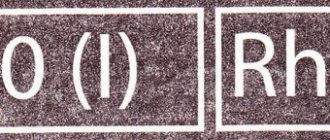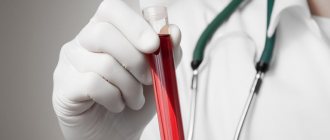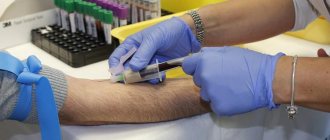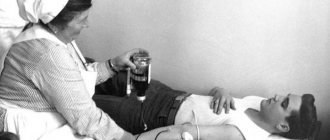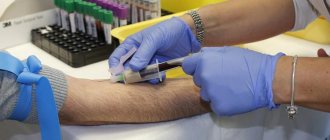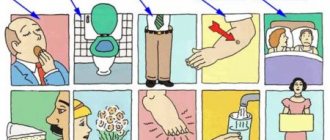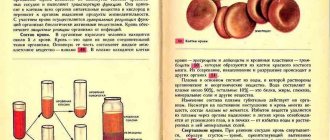A blood group is a set of properties of red blood cells that unite or distinguish an entire group of people from each other.
The blood type, as the Rh factor, is determined almost immediately after the baby is born. These indicators remain unchanged until the end of his life.
Certain symbols are used to indicate blood type and Rh factor.
Blood type and character
Character of blood group I - “Leader”
People with blood type I are strong individuals
.
They are brave and are not afraid to take risks, as they rely only on themselves. Confident and intuitive,
they are considered charming and power-hungry, often taking leadership positions and trying to succeed in everything.
They are determined to achieve their goals and are assertive, while arousing the sympathy of others.
However, they are prone to loneliness
, and they often need time alone as introverts. Therefore, they often choose careers and ambitions at the expense of friends and a rich social life. It is people with blood type I who cope best with stress.
Negative qualities include aggressiveness, arrogance and self-centeredness.
.
Character of blood group II - “Bomb”
People with blood type II can be called sensitive and pleasant
, empathetic listeners who long for everyone to live in harmony.
However, such a selfless
character also has its drawbacks.
Since people with blood type II avoid conflicts and do not want to become a burden to others, they are not as good at expressing themselves and often hold back their emotions and feelings.
Since they are very sensitive, such restraint becomes a time bomb that sooner or later leads to an explosion in the form of anger, depression and anxiety.
. This can lead to health problems and weakened immunity.
Although they are easily stressed, they cope quite well in crisis situations. People of blood type II seem kind, but you should not abuse their kindness and bring them to a state where they are ready to explode.
Other negative traits include pessimism, stubbornness and lack of flexibility.
.
Character of blood group III – “Chameleon”
Like people of blood group II, representatives of blood group III are good listeners and friends, but they do not restrain their emotions to a dangerous limit. Rather, they are good at adapting to different people and situations
, like a chameleon, and they express themselves freely.
They feel comfortable, and people around them also feel comfortable with them. They are outgoing, passionate extroverts
who use their intuition to read people and act according to their environment.
It is interesting that in some countries men with blood type III are considered the most unreliable partners, as they are considered incorrigible Don Juans with a grumpy character.
Other shortcomings of people in group III are laziness, selfishness and impatience.
.
Blood group IV character – “Rebel”
People with blood type IV, which is considered one of the rare ones, are very independent and rational
. They have some characteristics of blood group II, such as the inability to cope with high levels of stress, as well as characteristics of blood group III, such as a charming personality and great popularity among others.
Rhesus system
Levine and Stetson discovered Rh antigens in 1939. Scientists studied the reasons for the development of hemolytic reactions in women in labor during transfusions of husbands' erythrocytes identical in the AB0, MN and P systems. A year later, Landsteiner and Wiener produced antibodies by immunizing rabbits with red blood cells from rhesus monkeys. The antibodies are called anti-RH antibodies. The resulting agglutinins entered into an agglutination reaction with the erythrocytes of rhesus monkeys and with the erythrocytes of 85% of New York citizens of the white race. The antigen that caused the formation of antibodies was called RH factor (D factor).
The Rhesus system combines 45 antigens. Agglutinogens are inherited and remain unchanged throughout life. Immunogenicity decreases in the following order: D > c > E > C > e. Each agglutinogen is encoded by one of two closely related genes: RHD is responsible for the production of the D antigen, RHCE is responsible for the production of the Cc and Ee antigens. Rh-positive donors are considered individuals with D, C or E antigens on the surface of red blood cells. In the absence of the above agglutinogens, donors are considered Rh negative.
In rare cases, human red blood cells do not contain any Rh antigen. The phenotype is designated RhNULL. The Xro gene in this case is presented in homozygous form and suppresses the production of all antigens. Holders of the RhNULL phenotype do not exhibit agglutinogenic activity, but have the ability to transmit antigens by inheritance.
Among Europeans, the frequency of Rh D antigen-positive individuals is 85%. There are usually about 10,000 – 30,000 D molecules located on the membrane of red blood cells. There are two special types of D-positive individuals: Du (weak) and Dpartial (partial). The immune system of Du and Dpartial is capable of producing anti-D antibodies.
Weak antigen occurs in 1.5% of Rh-positive individuals and is characterized by a low number (100–500) of D molecules on the membrane. Is immunogenic for Rh-negative individuals. In this case, transfusion of D-positive erythrocytes to patients with weak D may cause sensitization of the donor’s blood cells. Erythrocytes with Du are weakly agglutinated or do not at all enter into a direct agglutination reaction with complete anti-Rh antibodies. Determination of Rh status is carried out using an indirect antiglobulin test. Du carriers are considered Rh-positive donors and Rh-negative recipients.
Partial D is deficient in one or more epitopes of a protein molecule. The immune system of people with Dpartial is capable of producing antibodies to the missing epitopes. Among partial antigen carriers, seven groups of individuals are distinguished. The DVI carriage (only epitope Z is present) has the greatest clinical significance: owners of this category produce antibodies to the unchanged antigen and to partial antigens DI - DV, DVII. The technique for detecting the Rh factor DVI consists in the sequential use of two diagnostic kits: monoclonal IgM anti-D antibodies (coliclone Anti-D-Super or Anti-D IgM) and polyclonal or monoclonal IgG antibodies anti-D (standard universal reagent or coliclone Anti-D D). A negative reaction result in the first and a positive result in the second stage of the study indicates the detection of DVI. Typically, the DVI category corresponds to the CcDee genotype. Pregnant women with DVI who carry a fetus with complete D are prescribed anti-Rhesus immunoglobulin.
Antibodies against Rh antigens are immune. They arise due to isosensitization. Specificity is determined by the antigens that provoke the formation of antibodies. Complete and incomplete antibodies are isolated.
Complete are IgM antibodies. They are distinguished by their large molecular weight and are detected less frequently compared to incomplete antibodies. Capable of agglutinating Rh-positive red blood cells. They are less important during transfusions.
Incomplete ones predominantly belong to the IgG class. They are attached to the surface of Rh-positive erythrocytes without the formation of agglutinates. The gluing of blood cells is carried out in the presence of colloidal solutions and proteolytic enzymes or after treatment with antiglobulin serum. They have a smaller molecular weight compared to full antibodies. Capable of passing through the placenta. During sensitization, complete antibodies are first produced, then incomplete antibodies (IgG immunoglobulins) are produced to a greater extent.
Over 90% of complications during blood transfusions are caused by incompatibility of the donor and recipient with the Rho(D) antigen. The hr'(c) antigen is also of great importance. Agglutinogen is present in 80–82% of the population. The remaining 18–20% of individuals fall into the high-risk group due to the high likelihood of hr'(c) incompatibility with donors and the development of post-transfusion complications.
Technique for identifying the Rh factor using zoliclon Anti-D-Super
Tsoliklon Anti-D-Super is a complete human anti-D IgM antibody. To obtain reliable results, the analyzed sample must contain a sufficient number of red blood cells.
- Provide good lighting and room temperature in the room.
- Place one large drop (approximately 0.1 ml) of Anti-D IgM on the plate.
- Place one small drop (approximately 0.03 ml) of the red blood cells being tested nearby.
- Mix two drops with a sterile stick.
- After 10–15 seconds, gently rock the plate for 20–30 seconds.
- Check for agglutination three minutes after mixing.
If a reaction occurs, the blood is assessed as Rh-positive (Rh+), if there is no reaction - as Rh-negative (Rh-). If agglutination is negative or weak, it is necessary to repeat the test with incomplete anti-D IgG antibodies in order to detect weak or partial D antigen.
reaction result
visual assessment of reaction results in transmitted light
registration of analysis results
Method for determining the Rh factor Du in a tube test
In parallel with the analysis, three control samples are performed: the reagent coliclone Anti-D (anti-D IgG) with standard Rh-positive and Rh-negative erythrocytes, the analyzed erythrocytes with a gelatin solution without the anti-D IgG diagnosticum.
- Place 0.05 - 0.1 ml (one drop) of red blood cells from a clot of coagulated blood or washed from a preservative into a test tube.
- Add 0.1 ml (two drops) of 10% gelatin heated until liquefied at 45 - 50 °C.
- Add one drop of Anti-D Zoliclone (Anti-D IgG).
- Perform mixing.
- Incubate the tube in a water bath for 10–15 minutes or in a thermostat at 48 °C for half an hour.
- Add 5 - 6 ml of isotonic solution.
- Invert the test tube 1 – 2 times.
- Assess for the presence of agglutination in transmitted light.
The absence of reaction results with anti-D IgM and pronounced agglutination with anti-D IgG indicate the detection of weak forms of antigen D. In case of weak agglutination, the test should be repeated in the indirect Coombs test.
Blood type and career
I blood group
People of blood type I rely mainly on practicality and ambition rather than creativity and intuition. office work is best suited for them.
.
A common profession that suits them in the same way as people with blood group II is the profession of accountant. They can also be good doctors
, like people of blood type III.
Otherwise, thanks to charisma and the ability to win them over, they can find a profession in the field of politics, business and religion
. They can rise to the position of president of the company and the best sales expert. These people are called to lead and manage, provided they have time alone to gain strength.
They are also quite energetic people and can engage in professional sports.
.
II blood group
According to blood type studies, certain professions are best suited for people with blood type II. They may be book lovers with sensory perceptions, such as writers, poets and even librarians
.
On the other hand, they are also considered to be intelligent perfectionists and can excel in the field of research
.
These could be economists, programmers and accountants
, as they are attentive to detail and thorough by nature. Such professions are more suitable for them, since most people with blood type II are introverts, and they do not need constant contact with others.
III blood group
Since people with blood type III have good intuition, the profession of a psychiatrist, detective and journalist
. They are very observant, especially when it comes to patient behavior, looking for suspects or stories that will interest other people.
People of blood type III can also do manual work to earn money. What all of these jobs have in common is that they are not typical office jobs.
IV blood group
People of blood group IV have an interesting personality and can choose an unconventional profession, for example, becoming fortune tellers or healers
.
If we talk about traditional professions, they can work in the field of public relations, become a company manager, mediators, teachers, diplomats and lawyers
.
Practical and managerial professions will suit them best, since people with blood type IV are rational and organized, but they are not innovators.
Characteristic diseases
Holders of the second group should pay attention to the work:
- Digestive organs. Gastritis, pancreatitis (with low acidity), cholecystitis can be observed here.
- Hearts. Characterized by a tendency to heart disease, ischemia, thrombosis, atherosclerosis.
- Circulatory system. Predisposition to acute leukemia.
- Thyroid glands – dysfunctions of its functions are often observed.
- Genitourinary system (urolithiasis).
Also, people of this type are prone to contracting food infections, smallpox, and they are predisposed to dental diseases.
Blood type and compatibility
Compatibility of blood group I
Although the best partners for blood group III are representatives of blood group I, this cannot be called mutual. The most suitable pair for group I is blood group II
.
Both partners are hardworking and try to do their work carefully, regardless of their choice of profession.
In addition, blood type I will take the lead, allowing the partner of group II to relax and worry less about trifles. Although a group II partner is considered most suitable for blood group I, people of group I get along well with representatives of all blood groups
.
Compatibility of blood group II
The most suitable partners for people with blood group II are representatives of their own and IV blood groups
.
If both partners have blood type II, they will understand each other well, both are caring, kind and patient, as well as punctual.
People of blood group I
also suits them, as they will take the lead in a couple.
However, representatives of group III are not very suitable for them, since people of group II lack spontaneity, and they like to keep the situation under control, which people of group III will not tolerate.
You should also be more careful, since you are a dreamer and a romantic and therefore often prefer to have your head in the clouds rather than live in reality.
Blood type III compatibility
People of blood group II and III are considered the most incompatible, since representatives of group II have an inflexible character, and those with blood group III lead a chaotic lifestyle
Oddly enough, people of their own III blood type are also not suitable for them, since they will not have enough order, and they need a practical partner.
of blood group IV can become a good partner
, since they have a creative personality, although they can sometimes be affected by the behavior of blood group III.
The best pair for group III are responsible partners of blood group I
who are caring, but also know how to have fun when necessary.
Although people of blood type III are passionate in love, one should not forget about their reputation as “bad” boys and girls.
Nutrition
For the human body with the second blood group, it is important to receive a maximum of minerals and vitamins with food. Since such people are predisposed to vegetarianism, the basis of the diet should be fruits, vegetables, and grains. It is better to eat them fresh, without heat treatment, however, you should not get too carried away with a raw food diet.
- Blood type of parents and children - how to determine what the child will have
In table 4 clearly shows what should be consumed to maintain health and proper functioning of all organs.
Table 4. Healthy and harmful foods for people with blood type II
| Product categories | Healthy foods | Harmful products |
| Vegetables | Almost everything, especially carrots, beets, cucumbers, bell peppers, broccoli. | Pickled vegetables and pickles |
| Moderate: tomatoes, eggplants, white cabbage, potatoes | ||
| Fruits and berries | Almost everything: apples, peaches, kiwi, apricots, grapes, strawberries | All sour varieties and types, as well as citrus fruits: lemons, grapefruits, oranges |
| Meat | Moderately dietary varieties: rabbit, chicken, turkey. It is better to steam, bake or boil | All fatty types (lamb, pork) |
| Fish and seafood | Lenten types | All fatty varieties |
| Cereals, grains and legumes | All types of cereals: buckwheat, rice, millet, pearl barley, etc. Legumes – soybeans, beans, lentils | |
| Beverages | Fruit juices, tea, natural coffee | Alcohol, orange juice |
| Milk and dairy products | Limited – natural yogurt, low-fat cottage cheese, hard cheese | Almost all dairy products |
It is also better to exclude hot sauces, mayonnaise, and confectionery from the diet.
What can a child inherit?
The principles of transmission of hereditary characteristics from parents to children were formulated more than a century and a half ago by the Austrian biologist, monk Gregor Johann Mendel. Mendel's experiments were understood and recognized only half a century after his death. Thus, classical genetics appeared at the beginning of the 20th century, Dmitry Okunev, a therapist and senior medical consultant at the Teledoctor24 service, tells Izvestia.
“Despite this, today parents are still concerned about the same questions: who will the baby look like, why did he become the owner of wonderful curls or a square chin. At this point, it is appropriate to recall that brown eye color and the gap between the front teeth are caused by a dominant gene, and the gene for straight hair is recessive, explains the doctor.
Blood for blood
Photo: Depositphotos/Paha_L
Pathogenic engineering: Izvestia found a patent for an “invisible” assembly of the genome of viruses
This method makes it possible to discreetly modify SARS-like microorganisms
According to him, recently in Russia there has been a steady increase in diseases transmitted by inheritance. Approximately 35–40 children suffer from them per thousand newborns.
— If we talk about the characteristics of hereditary diseases, then daughters are passed on from their mothers not only a tendency to be overweight and the entire range of characteristics of the monthly cycle, but even such a formidable disease as migraine (associated with the level of female sex hormones), depressive states, eye disease glaucoma and osteoporosis , metabolic disease. At the same time, the main parental figure for the child remains the maternal grandmother,” says Izvestia’s interlocutor.
On the paternal side, boys are transmitted the characteristics of the functioning of the male reproductive system, the degree of baldness and testosterone levels. In addition, heart and dental diseases can be transmitted to the child.

